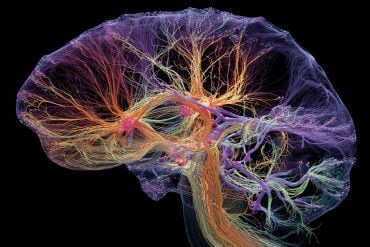Summary: A new study reports the female hormone cycle may explain why women are more prone to addiction and affected by triggers that lead to relapse.
Source: Vanderbilt University.
Women’s hormonal cycles may not only make them more prone to drug addiction but also more affected by triggers that lead to relapse, a new Vanderbilt University study revealed. The findings are especially significant since there are virtually no addiction studies in women that account for these cycles.
Erin Calipari, an assistant professor of pharmacology in the Vanderbilt Center for Addiction Research, points out that women represent a particularly vulnerable population, with higher rates of addiction following exposure to drugs, but addiction studies have primarily focused on the mechanisms underlying these effects in men. Her study found that, when fertility-related hormone levels are high, females learn faster, make stronger associations to cues in their environment and are more prone to seek rewards.
“Women becoming addicted to drugs may be a fundamentally different process than men,” Calipari said. “It’s important to understand this, because it’s the first step in developing treatments that are actually effective.”
The next step, she said, would be to figure out specifics of how hormonal shifts affect women’s brains and, ultimately, develop medications that could help override those. But long before those future medications are available, treatment centers could use the information in this study to educate women about their stronger mental connections to places and objects. That may mean a higher chance of relapse just by, for example, visiting a place where they used drugs or holding the kind of spoon they used in the process.
Females left out
Researchers historically have avoided using female animals in medical studies specifically so they don’t have to account for influences from hormonal cycles. As a result, medication development has often focused on correcting dysfunctions in men, which may explain why women often don’t respond to available medications or treatments in the same way as men do, Calipari said.
Her work was published recently in the Nature-affiliated journal Neuropsychopharmacology in a paper titled “Cues play a critical role in estrous cycle-dependent enhancement of cocaine reinforcement.”

In this study, male and female rats were allowed to dose themselves with cocaine by pushing a lever, with a light set up to come on during dosing. That’s similar to the environmental cues, such as drug paraphernalia, present when humans are taking drugs. When their circulating hormone levels were high, female rats made stronger associations with the light and were more likely to keep pushing the lever as much as it took to get any amount of cocaine.
Willing to pay more
Ultimately, females were willing to “pay” more in the presence of these cues to get cocaine. The results are transferable to humans through behavioral economic analysis, which uses a complicated mathematical equation with values for the most and least a subject will do to get a payoff. It’s one of the few ways that comparisons can be made across species.
“We found that the animals will press a lever just to get the light – that environmental stimuli,” Calipari said. “That has value to them.
“There’s epidemiological data that says women are more vulnerable, but it’s unclear what the factors are. We know they transition to addiction faster and have more problems with craving and relapse. Now, with research like this, we’re beginning to isolate environmental and physiological causes.”
This new research builds on earlier work Calipari published at the Icahn School of Medicine at Mount Sinai that showed estrogen intensifies the brain’s dopamine reward for cocaine use.
Funding: The Vanderbilt research was funded by NIH grants DA042111, MH065215-15 and MH064913-15, the Brain and Behavioral Research Foundation, the Whitehall Foundation and the Edward Mallinckrodt Jr. Foundation.
Source: Heidi Hall – Vanderbilt University
Publisher: Organized by NeuroscienceNews.com.
Image Source: NeuroscienceNews.com image is in the public domain.
Video Source: Video credited to Vanderbilt University.
Original Research: Abstract for “Cues play a critical role in estrous cycle-dependent enhancement of cocaine reinforcement” by Amy R. Johnson, Kimberly C. Thibeault, Alberto J. Lopez, Emily G. Peck, L. Paul Sands, Christina M. Sanders, Munir Gunes Kutlu & Erin S. Calipari in europsychopharmacology. Published January 23 2019.
doi:10.1038/s41386-019-0320-0
[cbtabs][cbtab title=”MLA”]Vanderbilt University”Women’s Hormones Play Role in Drug Addiction and Higher Relapse Rates.” NeuroscienceNews. NeuroscienceNews, 9 February 2019.
<https://neurosciencenews.com/women-hormone-addiction-10716/>.[/cbtab][cbtab title=”APA”]Vanderbilt University(2019, February 9). Women’s Hormones Play Role in Drug Addiction and Higher Relapse Rates. NeuroscienceNews. Retrieved February 9, 2019 from https://neurosciencenews.com/women-hormone-addiction-10716/[/cbtab][cbtab title=”Chicago”]Vanderbilt University”Women’s Hormones Play Role in Drug Addiction and Higher Relapse Rates.” https://neurosciencenews.com/women-hormone-addiction-10716/ (accessed February 9, 2019).[/cbtab][/cbtabs]
Abstract
Cues play a critical role in estrous cycle-dependent enhancement of cocaine reinforcement
While preclinical work has aimed to outline the neural mechanisms of drug addiction, it has overwhelmingly focused on male subjects. There has been a push in recent years to incorporate females into existing addiction models; however, males and females often have different behavioral strategies, making it important to not only include females, but to develop models that assess the factors that comprise female drug addiction. Traditional self-administration models often include light or tone cues that serve as discriminative stimuli and/or consequent stimuli, making it nearly impossible to disentangle the effects of cue learning, the cues themselves, and acute effects of psychostimulant drugs. To disentangle the interaction between drug-associated cues and the consummatory and appetitive responding driven by cocaine, we have developed a new behavioral procedure that combines Pavlovian-instrumental transfer with behavioral economic analysis. This task can be completed within a single session, allowing for studies looking at estrous cycle stage-dependent effects in intact cycling females, something that has been difficult in the past. In this study, we found no differences in self-administration across the estrous cycle in the absence of cues; however, when cues were introduced, the cues that acquired value during estrus—but not during diestrus or in males—increased motivation. Cues paired during estrus also increased c-fos expression to a greater extent in striatal regions, an effect that may underlie the observed increases in seeking induced by these cues, even weeks later. Together, these data suggest that fundamental differences in the motivational properties of psychostimulant drugs between males and females are complex and are driven primarily by the interaction between drug-associated stimuli and drug effects.






